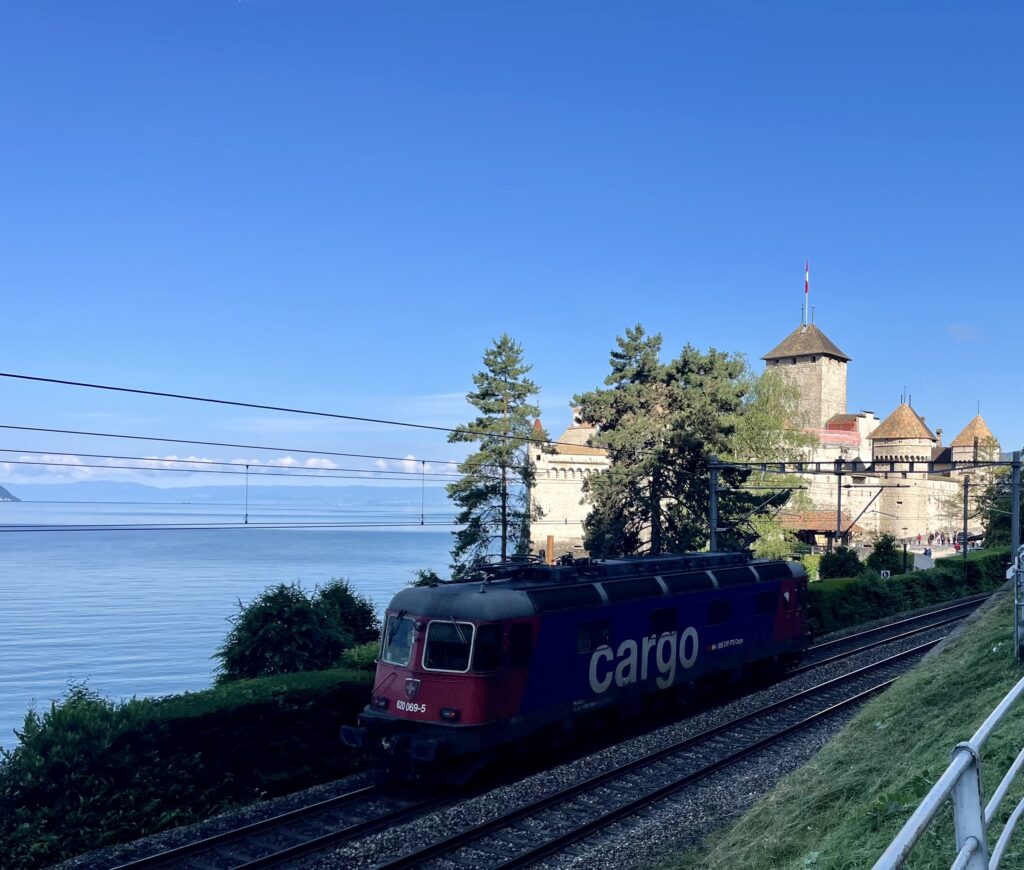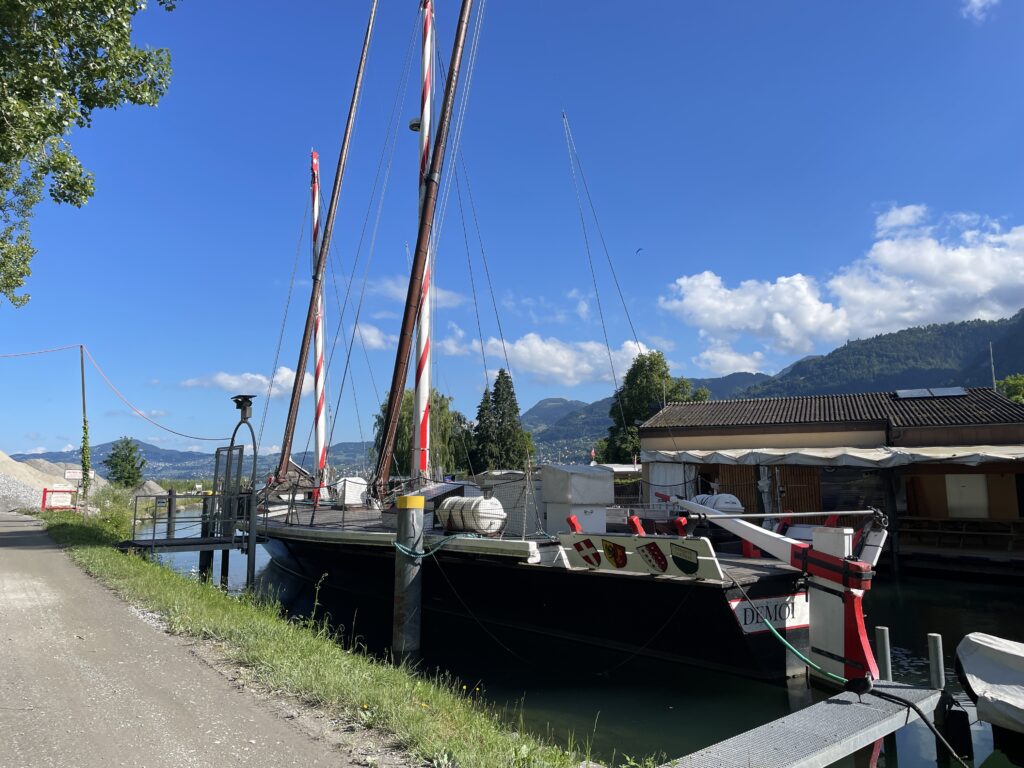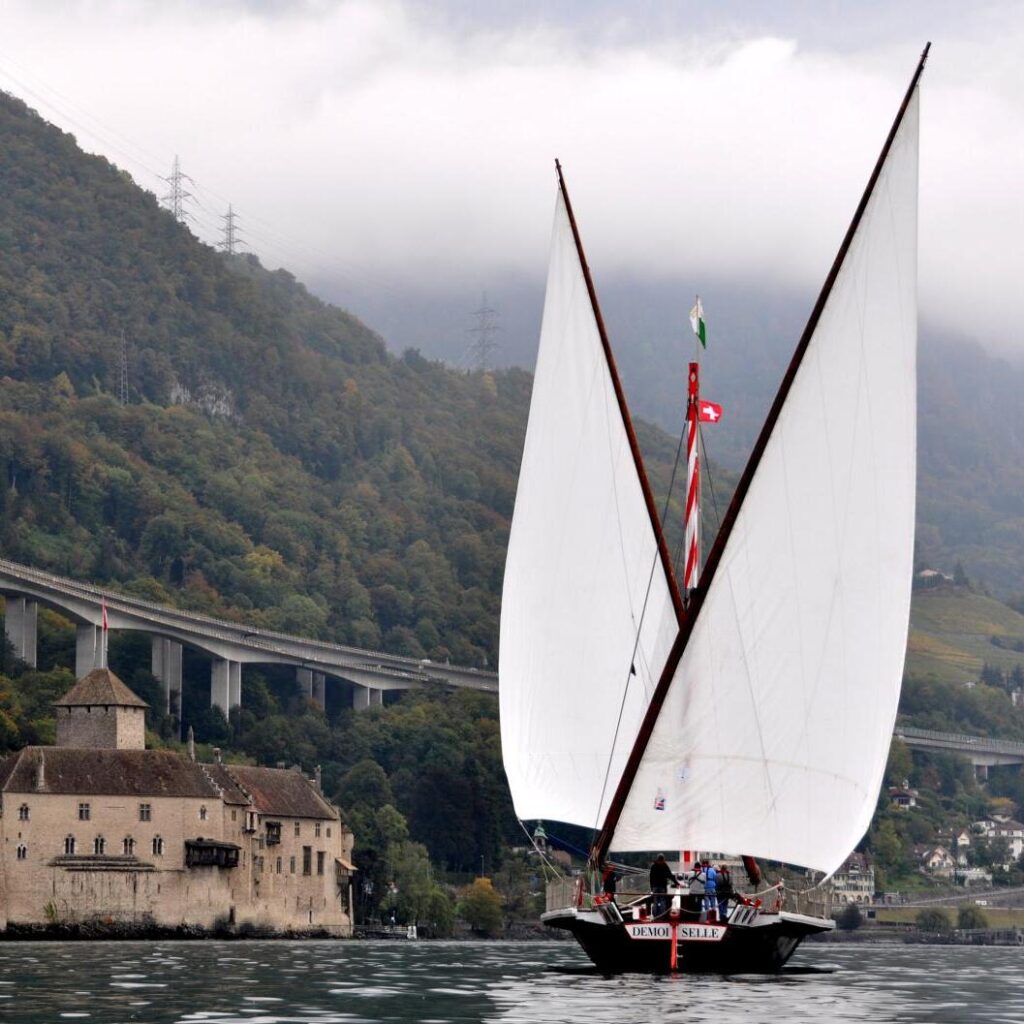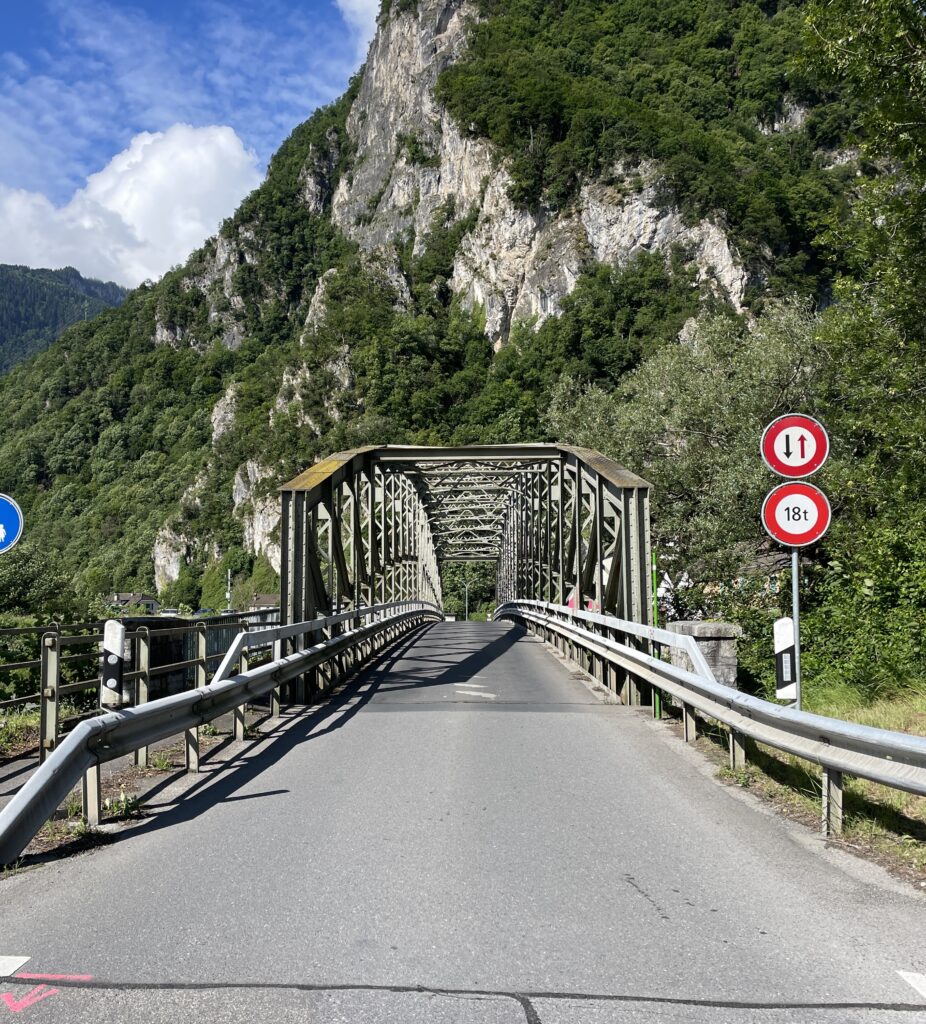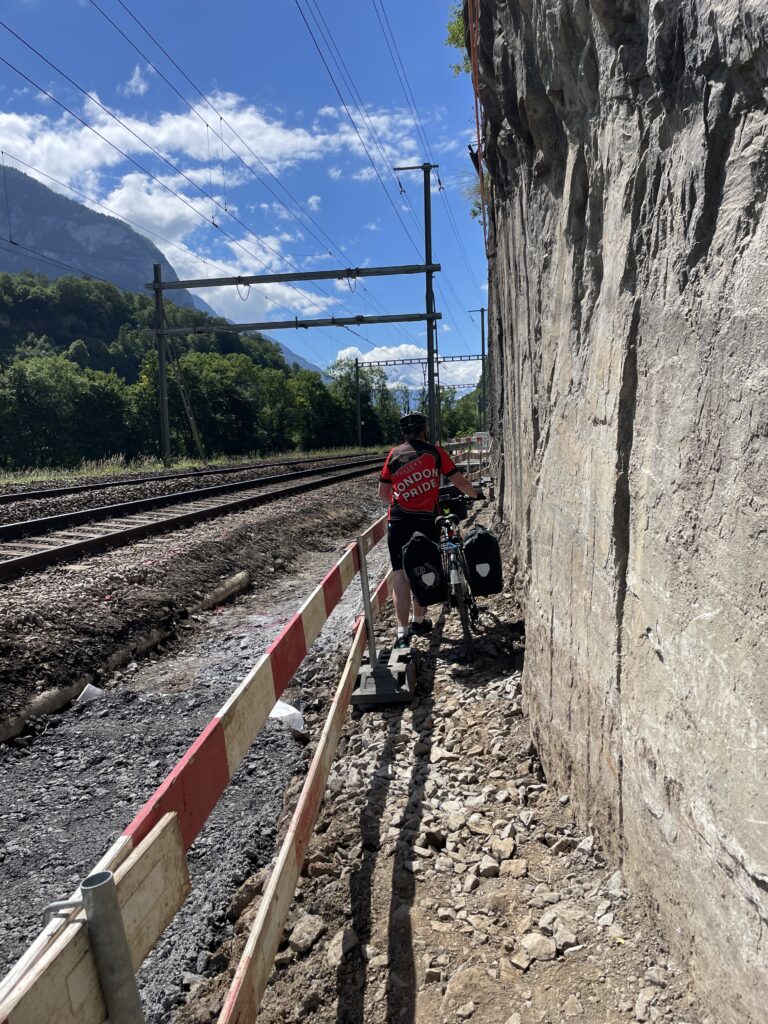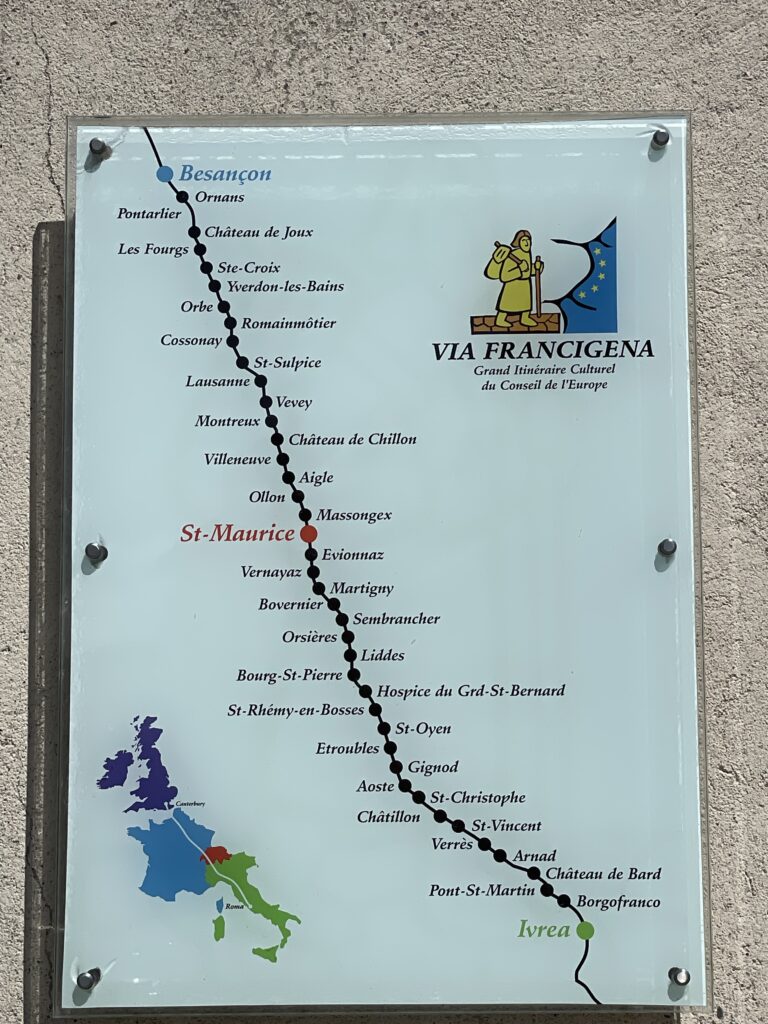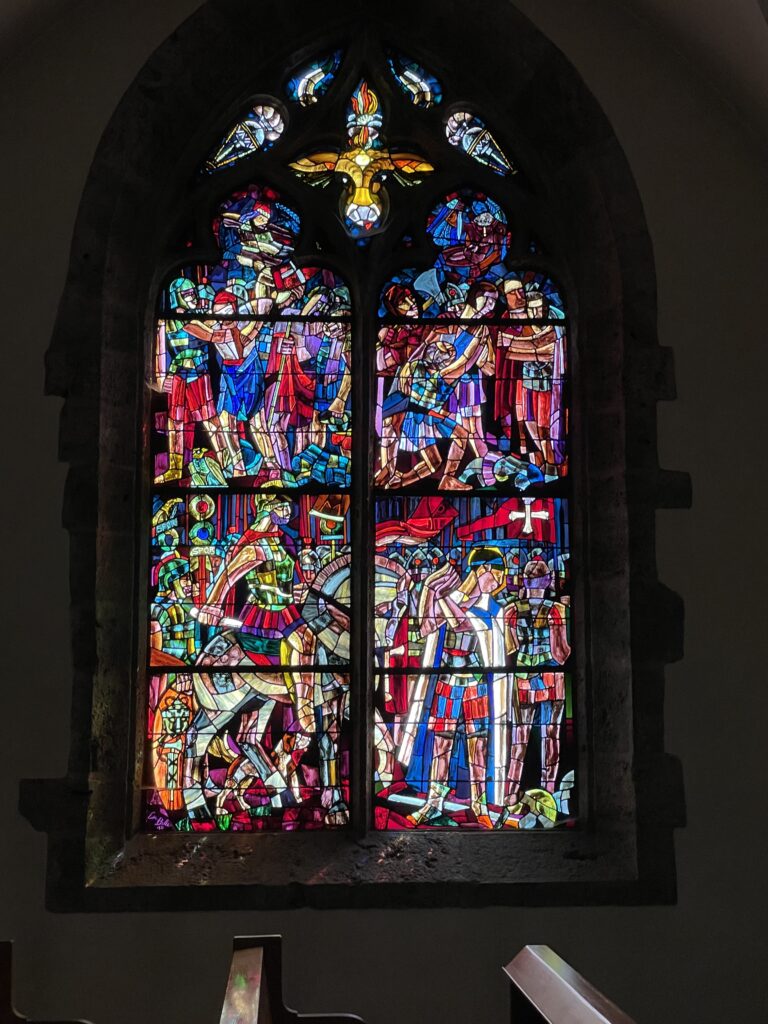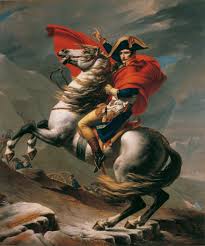In which Sid and Doris leave Montreux, passing the Chateau de Chillon, to visit the abbey church at St Maurice before making the big climb from Martigny to Napoleon’s bivouac at 1620 metres.
Leaving Montreux Sid remembers to note ‘seen for the first time on this trip’, such as Ferraris (360, 328, 348, 458) and Porsches as normal road companions. And pattern-painted coloured shutters, green and white in the Vaud.
Having never heard of Chateau de Chillon S and D are delighted to see it on the way out along the lake, with a Chinese tour group disembarking their coach. Not philistines like Sid. That our picture has a contribution from Swiss Rail is just typical.
Leaving the Lake Geneva we find the Demoiselle, sail number VD68, a replica of a boat built in 1828. It’s 30 metres long, 9 wide and carries a double Latin sail plan of 280 square metres set in ‘hare’s ears’. A sail type once common on the Med and the Nile. Sid offers a picture from the day and one of the craft in action.
Big European trips are defined by the rivers. Lake Geneva is mainly fed by the Rhone and we spend some time climbing gently by the river that is big even here. And we get a Sid bridge picture.
There are places where the path is a little intrepid, though we had seen four cyclist come the other way so we knew it went.
Though we have been on the Route Francigena since before Lausanne we see the first of these maps at the Abbey Church at St Maurice. And we do go to all of these from St Sulpice south, just not today.
The abbey church at St Maurice celebrates the martyrdom of Maurice, a soldier, leader of the thousand strong Theban legion, who was killed along with his Christian cohorts for refusing to kill Christians on the St Bernard pass. Here is the stained glass.
The real climb up to Napoleon’s Biviouac starts soon after Martigny, where Doris’s battery is recharged as S and D get outside the pancakes. It is a long, steep, many-hair-pinned road up.
We stop for the night where in May 1800 Napoleon camped with the army he took over the pass. The roads were shepherds’ tracks and they got maybe 40,000 men with horses, carts, cannon over to fight the Austrians at Marengo (near Alessandria, where some of you have been).
The best known propaganda picture of the event is Jacques-Louis David’s with Napoleon on an enormous charger with his red cloak flying in the wind.
Sid is happy to tell you Napoleon went over on a mule. Perhaps the props department was all out of mules?
